
A dog’s broken nail may not be life-threatening, but even a tiny tear on a single toe can be excruciatingly painful. Dogs of all breeds and sizes can break a nail. What’s more, getting the bleeding to stop can be challenging.
The nails of dogs consist of a collection of blood vessels and nerves called the quick. The quick is covered by a layer of hard material called keratin, which surrounds the sensitive part of the nail and forms a protective layer. The quick is living tissue while keratin is not. This is why clipping the tip of the nail is not painful but exposing the quick can hurt. The quick is also attached to the bone, so any damage to the quick can lead to infection in the bone, which is very serious.
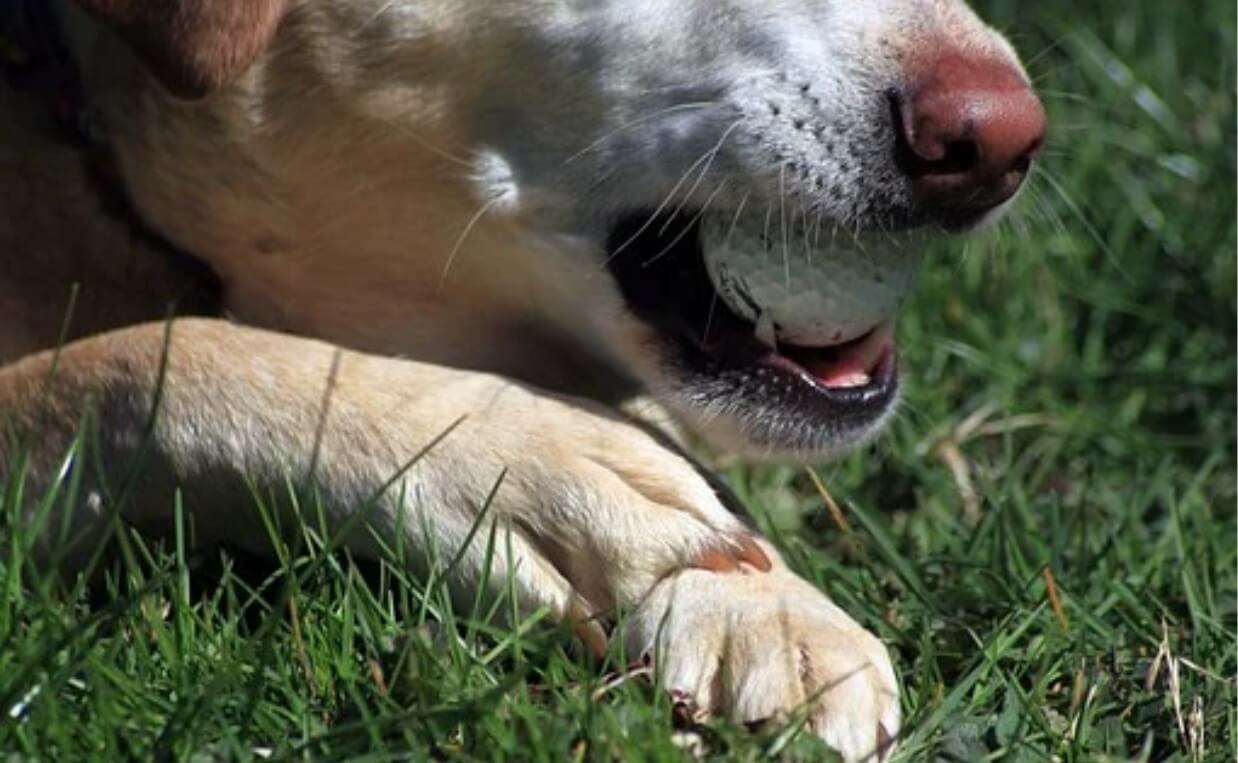
Common Causes of Broken Nails in Dogs
There are several causes of a broken or torn nail in a dog. Common causes include:
- Damage to the nail, especially if the dog is very active
- Nail snagging on carpeting, plants, upholstery or other materials when running or playing
- Inflamed toenails
- Accident when nails are clipped
- Weak nails due to an underlying health condition or aging
- Cancer in the foot and nail area
Regardless of how it happens, a broken nail hurts and needs immediate attention.
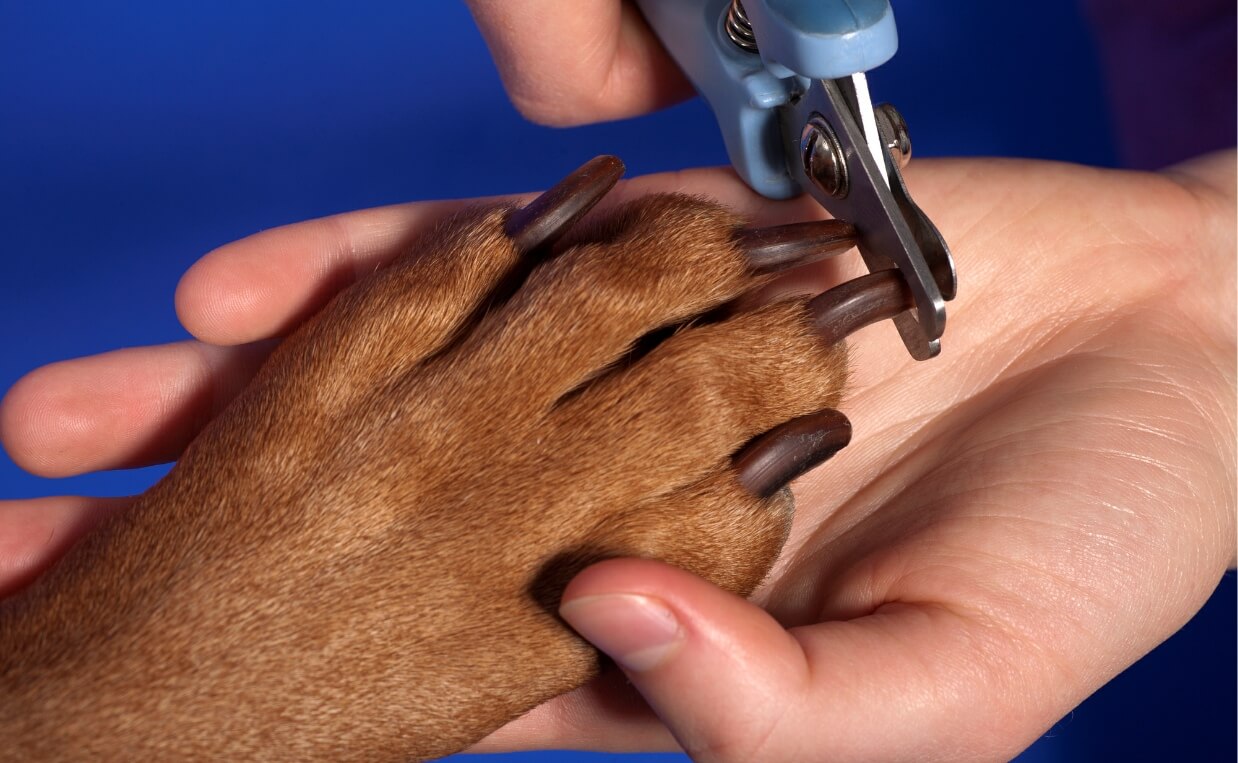
Symptoms of a Broken Nail
Most of the time, it will be obvious your dog is injured. The injury will be very painful. You may notice your dog is limping, yelping or licking his or her wound. Other signs might include:
- Hanging nail
- Blood stains on carpeting or floor
- Exposed flesh
- Infection
- Trauma
- Visibly damaged toenails
- Swelling
- Excessive bleeding
The bleeding comes from smaller blood vessels that will clot quickly and is typically not life-threatening. However, the bleeding may need to be stopped by a veterinarian. This can be quite painful, and your dog may bite if you try to administer first aid instead of seeking professional help.
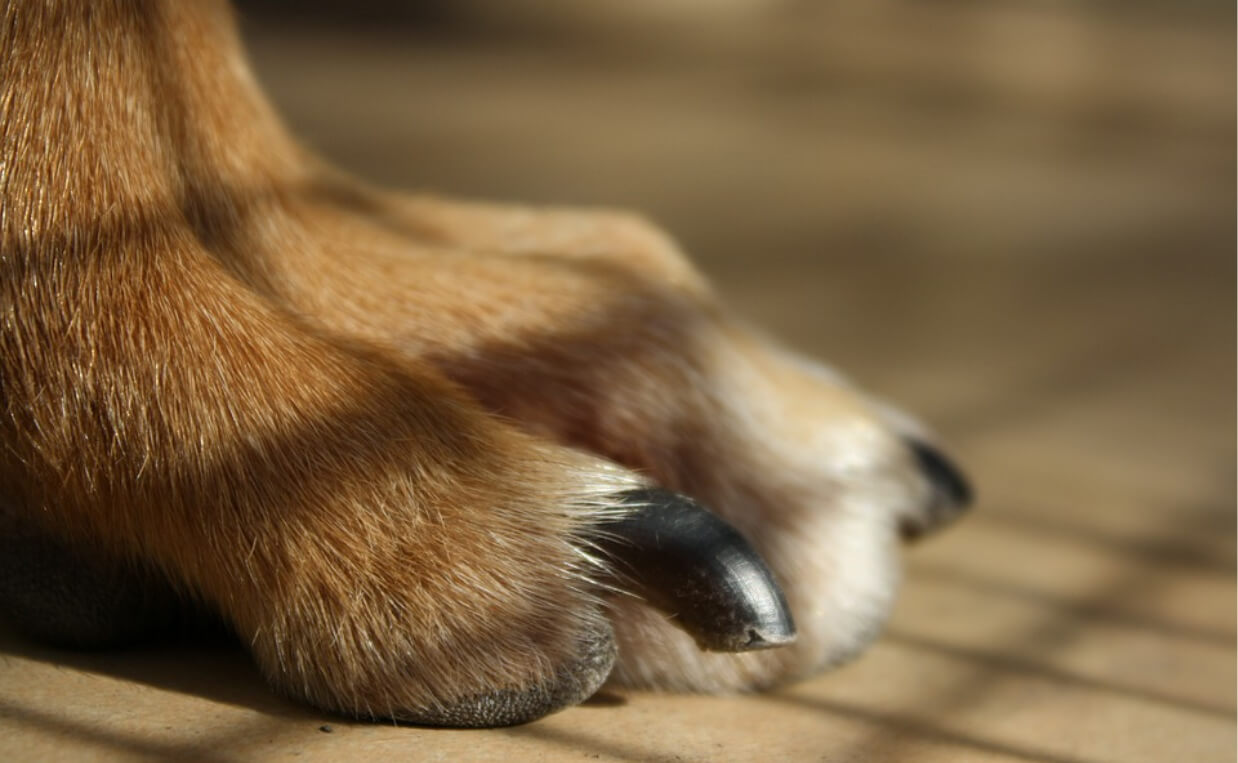
What Should You Do If Your Dog Has a Broken Nail?
If your dog yelps in pain and suddenly begins to limp or hold his or her paw up, check the foot for a broken nail and follow these steps:
- Safely restrain your dog. Have someone hold your dog while you tend to the nail. Remember even the nicest pet may bite when in pain. Provide restraint in the form of a hug that reassures your dog while keeping him or her immobilized.
- Control bleeding by wrapping in gauze or a towel and applying pressure. If the bleeding doesn’t stop within 5-10 minutes, apply a styptic pencil, silver nitrate stick or cauterizing powder to the nail. If you don’t have one of these items, you can use flour or cornstarch to help control the bleeding. Continue to hold pressure for another 5 minutes.
- If the bleeding stops you can better assess the situation. If there is just a small broken hang nail, you can trim it at home. If the break is higher up, exposing the pink quick or at the nail bed, you should bring your dog to your veterinarian.
- Most of the time you will need to take your dog to your veterinarian. Keep the foot wrapped in a towel as you proceed to your veterinary hospital. The damaged or broken part of the nail will need to be carefully removed. This procedure is often painful but can be accomplished quickly and often does not require sedation. However, depending on the degree of pain and where the break is, sedation and/or numbing above the break is needed to completely remove the damaged portion and to provide a good foundation for the nail to re-grow.
- Protect the nail bed from infection. Your veterinarian may apply antibiotic ointment or powder to the exposed nail bed and bandage the foot to prevent contamination and minimize further bleeding.
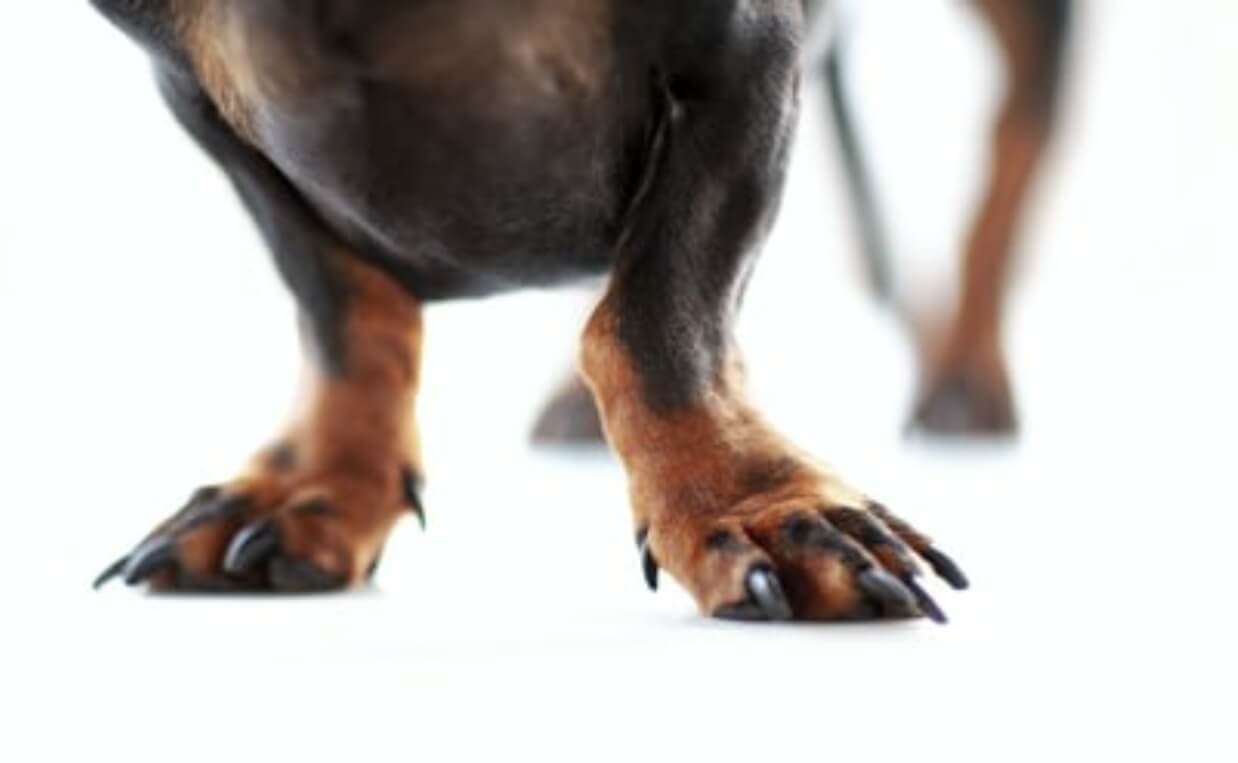
Diagnosis of a Broken Nail
Your veterinarian will visually examine the affected area. If there is extreme pain, the veterinarian will know by the dog’s response to touching. If so, the veterinarian may administer pain medication or sedation to help take away the pain.
If your veterinarian suspects there may be an underlying condition affecting the health of your dog’s nails, blood tests and urinalysis may be ordered.

How to Prevent Broken Nails on Your Dog
Prevention starts by keeping your dog’s toenails short. This is why it’s crucial you start grooming your puppy early and regularly. If you and your dog struggle over this issue, consider having an experienced groomer trim your dog’s nails. Most dogs do better with someone else because it tends to be less traumatic for them – and you!
For dogs with active outdoor lives, including those rough hiking trails, you might want to consider shoes for paw protection.
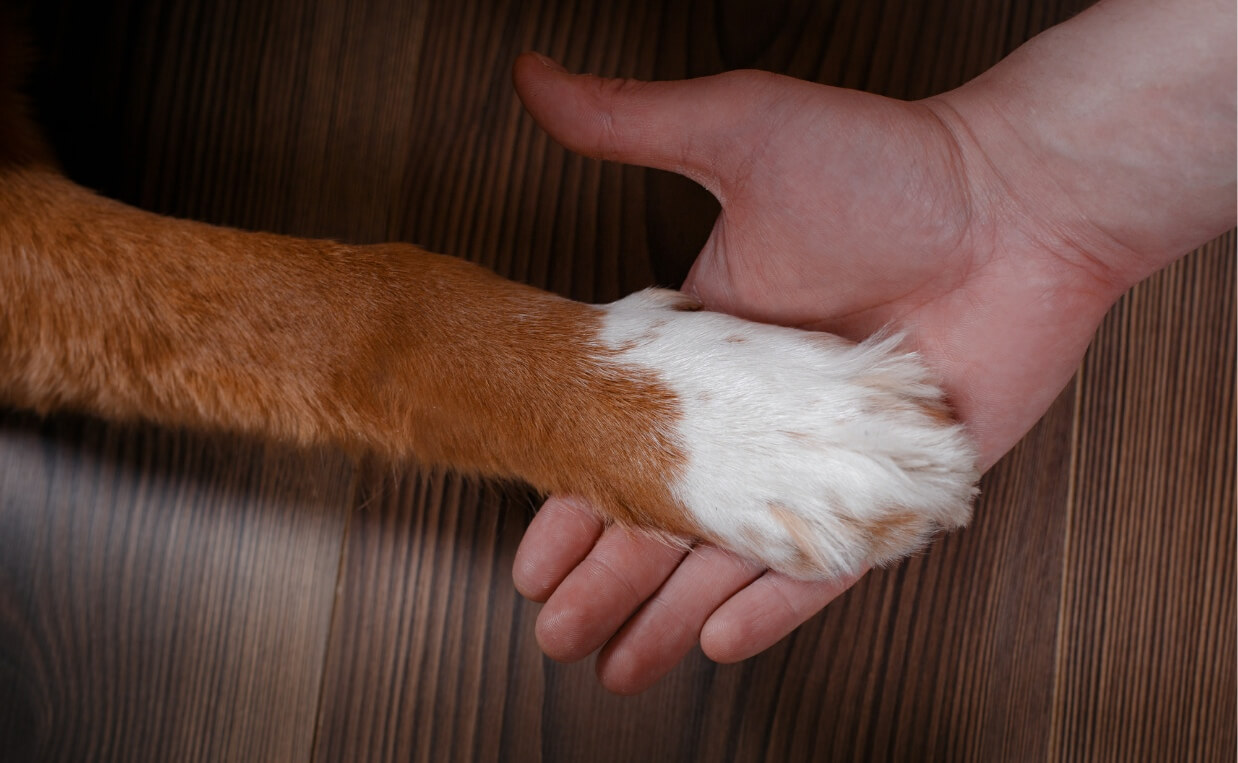
Final Thoughts
If your dog has a mild nail injury where the break doesn’t touch the quick, you may be able to treat your dog at home. However, bring your dog to a vet if the pain is agonizing for your dog, the broken nail encroaches the quick, the bleeding is unstoppable, the nail tissue looks shredded, the broken claw is cracked or firmly attached, or you think the injured site is infected.
If caring for a broken nail seems daunting, don’t hesitate to bring your dog to a vet. In particular, always seek medical care for an infection, rather than trying to treat it yourself.
Has your dog experienced a broken nail? How did you handle it? Please share your experience with the rest of the Canine Campus community below.

 How to Provide the Best Care for Your Senior Dog
How to Provide the Best Care for Your Senior Dog Signs, Causes and Treatments for Canine Papillomas (Warts)
Signs, Causes and Treatments for Canine Papillomas (Warts) What You Need to Know About Inflammation in Dogs
What You Need to Know About Inflammation in Dogs How to Care for a Dog with Cushing’s Disease: A Comprehensive Guide
How to Care for a Dog with Cushing’s Disease: A Comprehensive Guide How to Save Money When Buying Pet Insurance
How to Save Money When Buying Pet Insurance






Leave a Reply